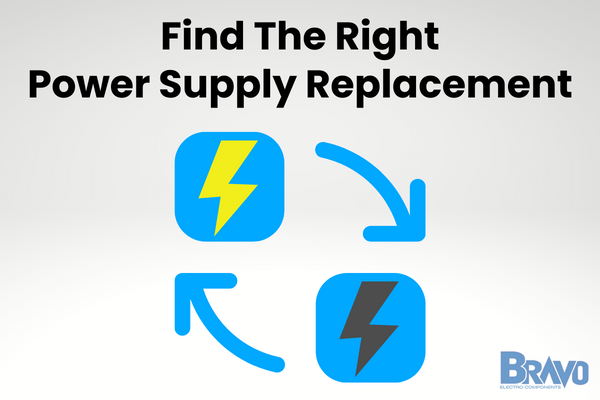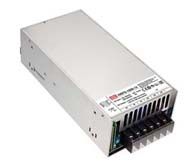
Your heart pounds as you look at the machine before you. It's a crucial piece of equipment, a giant that powers your manufacturing plant, your medical facility, or even your research lab. Its performance is critical, yet it's faltering, stuttering, struggling to deliver the power it once did so effortlessly. Or maybe it’s stopped working altogether.
The diagnosis is clear: it's an issue with the power supply. This isn't just about keeping your current operations running; it's about ensuring future reliability and efficiency.
You find yourself standing on the precipice of a daunting challenge - learning how to replace a power supply. The task may seem intimidating, but it also represents an opportunity to equip yourself with practical skills and knowledge, paving the way for future resilience in the face of such issues. And you might be surprised to learn that it's not as complex as it initially appears.
So take a deep breath, steady yourself, and let's embark on this journey of empowerment together. With the right guidance and tools, you'll see that you too can master the complexities of a replacement power supply, making it a much more manageable task that anyone with a willingness to follow directions can do.
Can You Replace a Power Supply Yourself?
Yes, you can! At first glance, replacing a power supply might appear intimidating, yet with the right knowledge, patience, and basic tools, it is absolutely doable.
You'll likely be faced with a barrage of technical terms like supply voltage, power supply efficiency rating, UL listed power supplies, and more. These concepts are key to understanding how to replace a power supply correctly and selecting the right replacement unit. And thankfully we have easy-to-understand guides on all those terms to break them down.
When you replace a power supply yourself, you save not only money but also gain invaluable skills. A sense of accomplishment and newfound confidence are additional rewards of this endeavor. After all, every expert was once a beginner too.
Common Challenges of Replacing a Power Supply
When it comes to replacing a power supply, each device has unique needs. So learning how to replace a power supply can vary a bit. Here are some common challenges you might encounter along the way.
Understanding Power Requirements
Determining the total power requirement of your device can be one of the initial hurdles in replacing a power supply. Every component inside your device requires a certain amount of power.
The power supply unit (PSU) must meet these requirements for the system to operate efficiently. To avoid the consequences of a bad power supply, it's vital to understand power supply sizing and ensure that your replacement unit can deliver the needed power.
Physical Compatibility
After you have determined what power supply you need, you must make sure that the new unit will physically fit inside the device’s case. Power supplies are not universally sized; they come in a variety of forms to suit different devices.
Ensuring that the replacement PSU aligns with the mounting points in your case and provides all necessary connectors for your device’s components is critical to successful installation.
Another consideration to consider whe it comes to compatibility is knowing when you need a regulated vs unregulated power supply. A regulated power supply maintains a constant output voltage regardless of changes in input voltage or load conditions, ensuring that your devices receive a stable and precise voltage at all times.
On the other hand, an unregulated power supply does not have the same voltage stabilization capabilities, which can lead to fluctuations in the output voltage as the input voltage or load conditions change. These fluctuations can potentially harm sensitive electronic components or cause unpredictable performance issues.
Availability and Cost
Another challenge in replacing a power supply is finding a unit that fits your budget while still meeting your needs. With the plethora of power supply units on the market, it can be tough to find one that provides the right balance between price and performance.
Note that when learning how to install a power supply, taking the time to research different models and compare power supply specifications against their cost is an essential part of the process.
On the note of cost, how long do power supplies last anyway? The lifespan of a power supply can vary greatly depending on factors such as quality, usage, and environmental conditions. Typically, higher-quality power supplies are designed to last longer and provide more stable performance over time.
On average, a well-built power supply can last anywhere from 5 to 10 years or even longer. However, factors such as heavy usage, extreme temperature variations, dust accumulation, and power surges can significantly shorten the lifespan of a power supply.
How to Replace a Power Supply: Tips for Finding the Right Replacement Power Supply and Making the Fix
Replacing a power supply is an endeavor that can be simplified with the right knowledge and tips. Let's delve into some of the key steps involved in the process.
Identifying the Early Warning Signs of PSU Failure
Before you can embark on the task of replacing a power supply, it's crucial to identify if your current PSU is indeed failing. Industrial power supplies, like any other equipment, exhibit certain telltale signs when they're on the brink of failure. This may include unexpected shutdowns, overheating, equipment malfunctions, voltage fluctuations, and more.
If you're experiencing any of these bad power supply symptoms, it could signal that your power supply is on the brink of failure, and it's time to consider a replacement.
Researching and Choosing the Right Power Supply
Moving on, what power supply do I need?
There are various types of power supplies available, and choosing the right one can be a daunting task. Your selection will be determined by your specific needs.
An enclosed power supply, for instance, offers added protection against dust and other environmental factors, making it a great choice for harsher environments. In contrast, an open frame power supply is compact and offers enhanced cooling, making it ideal for smaller cases or heat-sensitive systems.
A DIN rail power supply can be easily mounted on a DIN rail, simplifying installation in larger systems, while an external power supply converts AC power to DC power outside your device, reducing heat build-up inside the case.
An essential aspect of power supply selection is understanding the difference between AC and DC. The electricity supplied by the grid is Alternating Current (AC), whereas many industrial devices require Direct Current (DC) to operate. This is where an AC DC power supply comes in, performing an indispensable function of converting AC power from your electrical grid into usable DC power.
Make the Purchase at Bravo Electro
Armed with the right knowledge about what type of power supply you need, you can confidently make your purchase. Bravo Electro offers a wide range of the high quality power supplies to suit your specific needs. From AC DC power supply options to 12 volt power supply, 24 volt power supply, and even 48 volt power supply, we have an extensive inventory to cater to all your power supply needs.
Our team of experts is also available to assist you in finding the perfect match for your system. We take power supplies seriously. And that's why we've partnered with only the best of the best power supply manufacturers in the world. It's also why our engineers and salespeople go through multiple technical training seminars every year.
And with same day shipping, the choice is easy. So, why wait? Turn your power supply troubles into a thing of the past with Bravo Electro.
Preparing for Replacement: Safety, Tools, and Guidelines
The journey of understanding how to replace a power supply begins once you've procured your replacement power supply. In this endeavor, safety, appropriate tools, and following correct guidelines are of paramount importance. Make sure the equipment is disconnected from the power source, and you're working in a well-illuminated and clean environment to avoid misplacing screws or causing accidental damage.
You'll require tools like a Phillips-head screwdriver, commonly used in hardware installations, and potentially an anti-static wrist strap if dealing with sensitive electronic components.
Removing the Old Power Supply
With safety and tools addressed, let's move onto how to replace a power supply. The first step is to detach all connections from the old power supply to your industrial equipment. Trace each cable from the power supply to its endpoint and disconnect it, being careful not to force or yank any connections.
The power supply unit is typically secured with multiple screws on the mounting rack. Once all screws are removed, you can carefully extract the old power supply. Handle it gently to prevent any damage to the surrounding equipment or the rack itself.
Installing the New Power Supply
With the old unit out of the way, it's time to delve into how to install a power supply. Position the new unit on the rack, aligning it with the mounting points. Secure it in place using the screws you removed earlier.
Once the new power supply is secured, you can start reconnecting the power cables to your equipment. If you're unsure, refer back to any notes or photos you took during the disassembly process. Confirm that each connection is secure; a loose cable can lead to power instability.
It's also worth noting that some power supplies are modular, meaning the cables can be detached from the power supply itself.
But what is a modular power supply? It means the cables can be detached from the power supply itself and is a design that allows for better cable management and improved airflow within your case. So if you opted for a modular PSU, make sure to connect the necessary cables to the PSU before installing it in the case.
Ultimately, understanding how to install a power supply involves a balance of careful preparation, meticulous execution, and patient troubleshooting. With time and experience, you'll become adept at maintaining and enhancing your industrial equipment's power needs.
Final Thoughts on How to Install a Power Supply Replacement Unit
While the task of replacing a power supply might initially seem intimidating, with the right knowledge and a patient approach, it's entirely manageable. And with the best power supplies available at Bravo Electro, you're assured a replacement that will provide reliable power to your company’s device for years to come.
By learning how to install a power supply yourself, you'll save money on technician fees, learn more about your device, and perhaps most importantly, gain the satisfaction of having improved its performance with your own two hands.
So are you ready to embark on this empowering journey? Shop with Bravo Electro today for your new power supply!
While you’re at it, check out our other posts on cool topics such as how to repair power supplies, is household electricity AC or DC, and LED driver troubleshooting.








